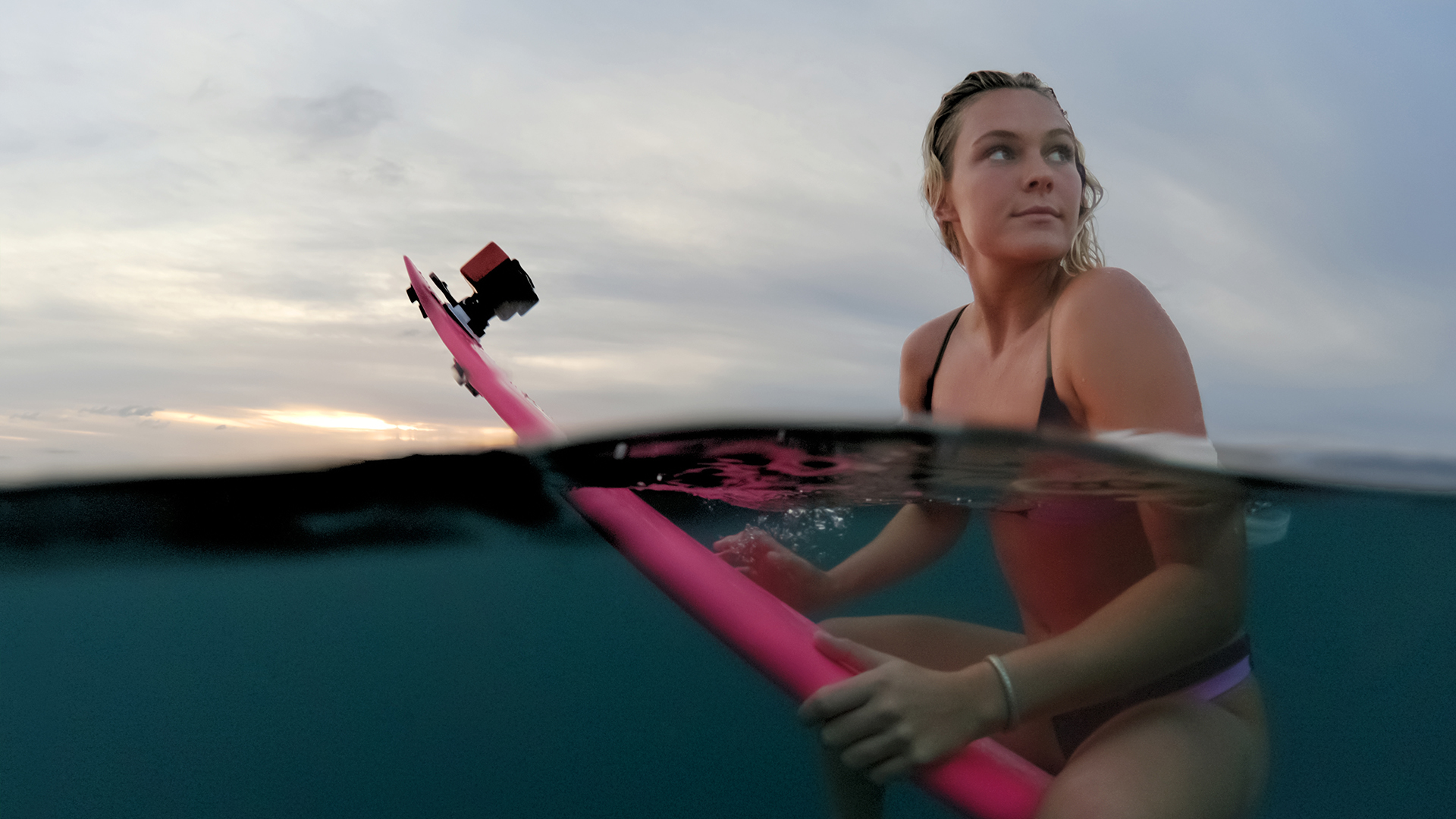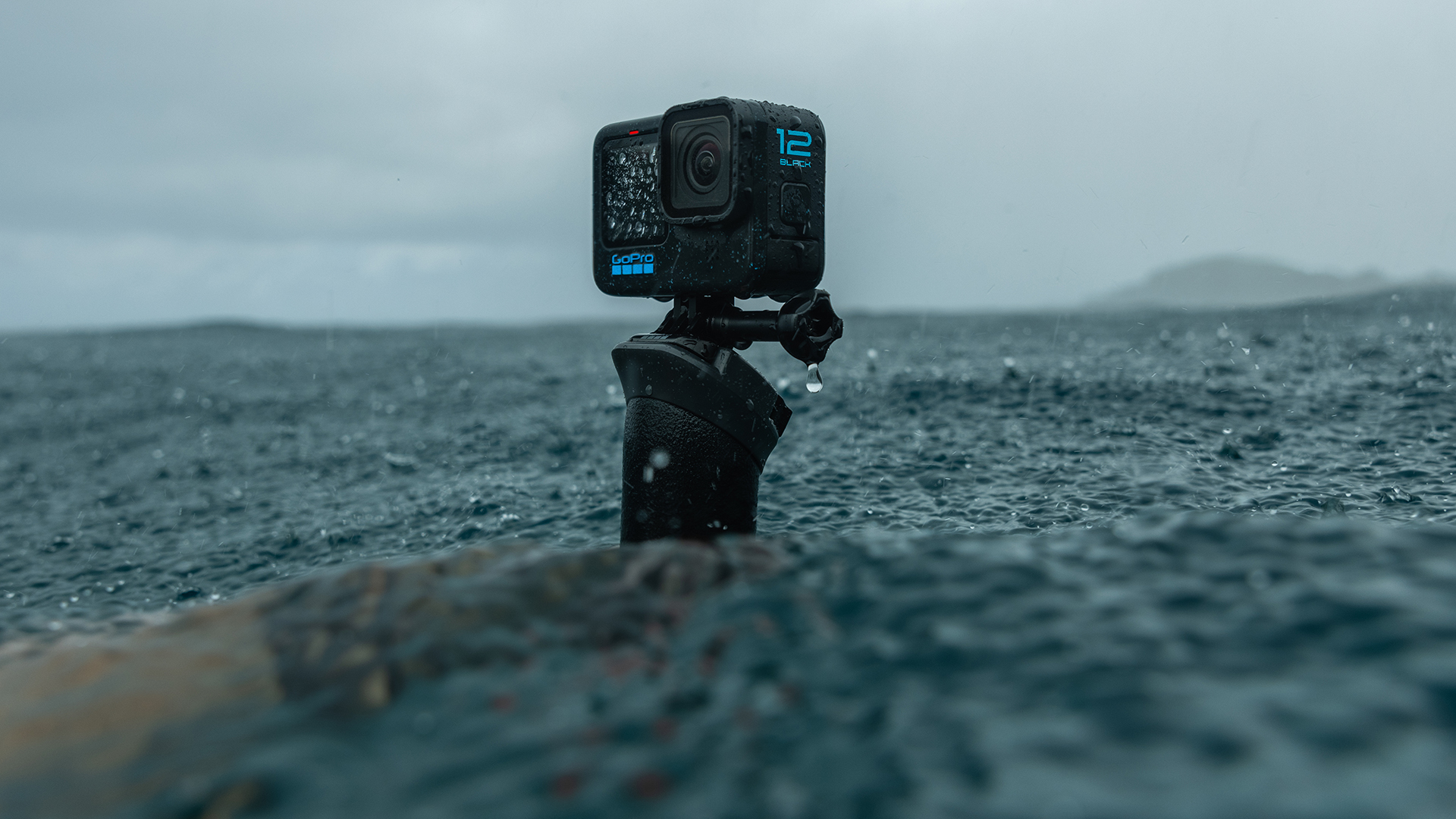How to shoot stunning underwater footage with a GoPro, according to a marine scientist
GoPro ambassador Charlie Young's handy tips on how to shoot stunning footage with your action camera underwater


You recently bought a GoPro because you're going snorkelling at the Great Barrier Reef. Excellent! However, you suddenly realise you have no idea how to use the action cam to capture the beauty of the underwater world you're about to enter.
Fear not—we found the best person to teach you the ins and outs of underwater videography: Charlie Young, a marine scientist who's been a keen GoPro user for over a decade. Charlie knows everything there is to know about the best GoPros, especially how to make the most of these stunning action cameras in the water.

Charlie is an award-winning marine scientist (BSc Hons; MSc) and conservation storyteller who lives full-time at sea onboard her sailboat, ‘Feral’, where she dedicates her time afloat to documenting wildlife and reporting on environmental threats; both above and below the water. Alongside her research she is also a passionate communicator and my advocacy work has seen her invited to speak at landmark events such as COP26 and the Blue Earth Summit.
"I have been using GoPro for over a decade to document my travels and wildlife adventures," she says, "I bought my first model (HERO2) in 2013, which I used on a solo trip to Indonesia, where I worked as a research assistant on a slow loris conservation project."
"Some of the best content I have shot has to be while diving in the Maldives," adds Charlie, "My GoPro HERO11 Black captured incredibly high-quality footage of sharks, rays, and mantas and stood up to deep dives and low-light conditions."
Her favourite models for underwater shooting are the latest GoPro HERO12 Black and its predecessor mentioned above. "I particularly love that I can shoot at a ridiculously high resolution in slow motion. Slowing down the action underwater adds depth and poeticism to what I film, captivating viewers in a whole new way."
Below, Charlie shares some tips on how to capture your best videos underwater using a GoPro. If you haven't got a GoPro yet but you would want one, check out T3's roundup of the best GoPro deals today.
1. Keep your GoPro level
Charlie's top tip is to always consider your position in relative to the subject. Try shooting wildlife from below or on its level to add depth to the photo or video.
Get all the latest news, reviews, deals and buying guides on gorgeous tech, home and active products from the T3 experts
"Although it depends on your subject, generally, I find the best footage comes from keeping the horizon level, swimming in a straight line or staying stationary and tracking the wildlife. HERO12 Black has a Built-in Horizon Lock within HyperSmooth 6.0, which really helps with this."
She recommends avoiding panning around too much or making any jerky movements, as this will impact the footage. "And always keep HyperSmooth turned on!" Charlie adds, "This helps to get rid of any shake. Watch your subject and study how it moves. This will help you choose the best angle and position to place yourself in to capture the best footage or photo."
2. Consider where the light is coming from
Capturing amazing photos both over and under the sea line requires understanding light and how it affects your subject.
As Charlie explains, shooting with the light behind you – so to speak – helps you avoid shadows on your subject when photographing or filming wildlife.
On occasions, though, shooting into the light, especially at sunrise and sunset, can make for dramatic and beautiful shots.
"What you choose to do will depend on the result you want from your content," she explains, "If you want sharp and detailed shots of an animal, I would shoot with the light. If you want a dreamlike landscape scene of a bustling reef, I would shoot early or late in the afternoon."

3. Let nature be nature
"Wildlife is under increasing pressure from divers and content creators seeking to get up-close shots," Charlie explains, "Always check and respect the rules when approaching wildlife and try to give it personal space. Animals don’t respond well to being chased, and some of the best shots I have got have been when I have stayed still and let the animal come to me."
If you dive with someone who knows the area, always pay attention to their advice. Check how close they recommend you should approach animals, and try to get as close to them as possible without disturbing them.
"The closer the shot, the more detail and less noise (particles and floating debris) between you and your subject, which will always improve the video or photo," Charlie suggests, "But respect for the wildlife should always be at the forefront of your work."
4. Accessorise
"Use an El Grande (retailer link) to help you self-shoot," Charlie recommends, "By extending the arm and holding the camera out in front of you, you can add space between you and the camera and get wide-angle shots with wildlife.
5. Keep it high
Charlie recommends shooting at the highest resolution and frame rate possible, which on the HERO12 Black is 5.3K at 60fps. "By shooting in the highest resolution and frame rate, you can convert your footage to slow motion afterwards," she adds.
The HERO12 Black also lets you shoot in portrait (9:16), perfect for capturing social content.
"Unless you dive deeper, in which case, you should consider shooting at a lower frame rate (30fps) to allow the camera to capture extra light and reduce noise in images," she adds.
6. Spit it out
The HERO12 Black has a Hydrophobic lens that sheds water to keep your shots crystal clear when you’re in the water. "But if you have an older model and want to avoid water on the lens at the surface, wipe it with some spit." Top tip from Charlie!
7. Check yous settings
Charlie suggests using a wide angle when shooting big wildlife and a linear when shooting smaller subjects or up close. It's worth checking with the dive leader what sort of content you're most likely to see and adjust your GoPro before the dive. As user friendly as these action cams are, it's not the easiest to change all the settings when your in the water.
8. Keep it on
One final tip from Charlie: "Turn off the screensaver! Nothing worse than filming and the display screen switching off."
There you have it! Eight top tips to ensure you always have the best possible content when using your GoPro underwater.

Matt Kollat is a journalist and content creator who works for T3.com and its magazine counterpart as an Active Editor. His areas of expertise include wearables, drones, fitness equipment, nutrition and outdoor gear. He joined T3 in 2019. His byline appears in several publications, including Techradar and Fit&Well, and more. Matt also collaborated with other content creators (e.g. Garage Gym Reviews) and judged many awards, such as the European Specialist Sports Nutrition Alliance's ESSNawards. When he isn't working out, running or cycling, you'll find him roaming the countryside and trying out new podcasting and content creation equipment.